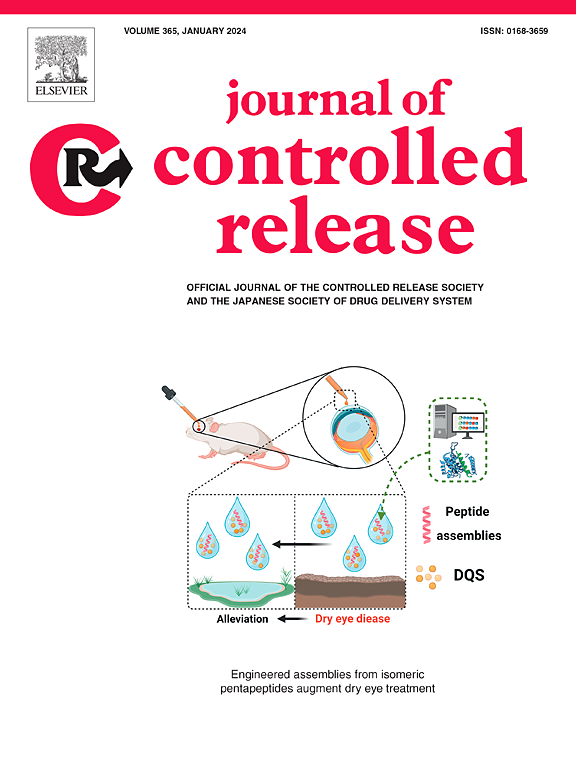Sinomenine-glycyrrhizic acid self-assembly enhanced the anti-inflammatory effect of sinomenine in the treatment of rheumatoid arthritis
IF 10.5
1区 医学
Q1 CHEMISTRY, MULTIDISCIPLINARY
引用次数: 0
Abstract
Rheumatoid arthritis (RA) is a common chronic systemic autoimmune disease that causes cartilage and bone damage in multiple joints, ultimately leading to disability. There is an urgent need to develop multidimensional strategies to treat RA. Sinomenine (SIN) has the distinctive pharmacological activity in treating RA, but its broader clinical application is limited by its exceedingly short half-life and adverse digestive tract effects. To overcome this obstacle, a self-assembled nanohydrogel (S-G hydrogel) was designed and produced with sinomenine (SIN) and glycyrrhizic acid (GA) without carriers or catalysts through noncovalent bonding. The S-G hydrogel could promote the absorption of SIN probably by protecting SIN from releasing and degrading in the acid circumstances. Oral intake of the S-G hydrogel significantly suppressed the overactivation of neutrophil via the NF-κB and MAPK pathways in mice with RA. Furthermore, the S-G hydrogel regulated neutrophil activity by reversing apoptosis delay and decreasing autophagy-dependent NET formation. In summary, this study presents a self-assembled hydrogel with promising potential for clinical application, and offers a novel strategy to develop new drugs from the existing patent medicine composed of compounds from traditional Chinese medicine, as well as a special insight to elucidate the herb-matching mechanism in decoction prescriptions.

求助全文
约1分钟内获得全文
求助全文
来源期刊

Journal of Controlled Release
医学-化学综合
CiteScore
18.50
自引率
5.60%
发文量
700
审稿时长
39 days
期刊介绍:
The Journal of Controlled Release (JCR) proudly serves as the Official Journal of the Controlled Release Society and the Japan Society of Drug Delivery System.
Dedicated to the broad field of delivery science and technology, JCR publishes high-quality research articles covering drug delivery systems and all facets of formulations. This includes the physicochemical and biological properties of drugs, design and characterization of dosage forms, release mechanisms, in vivo testing, and formulation research and development across pharmaceutical, diagnostic, agricultural, environmental, cosmetic, and food industries.
Priority is given to manuscripts that contribute to the fundamental understanding of principles or demonstrate the advantages of novel technologies in terms of safety and efficacy over current clinical standards. JCR strives to be a leading platform for advancements in delivery science and technology.
 求助内容:
求助内容: 应助结果提醒方式:
应助结果提醒方式:


